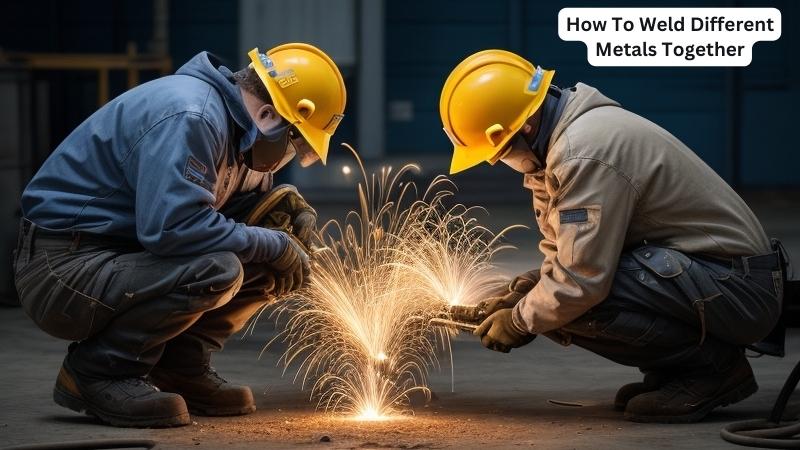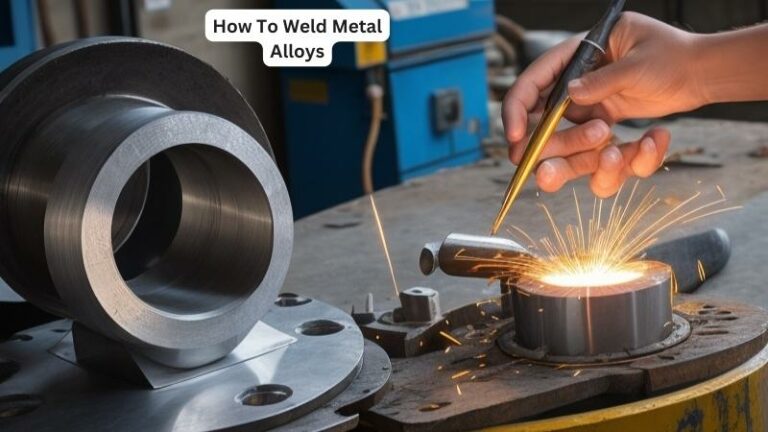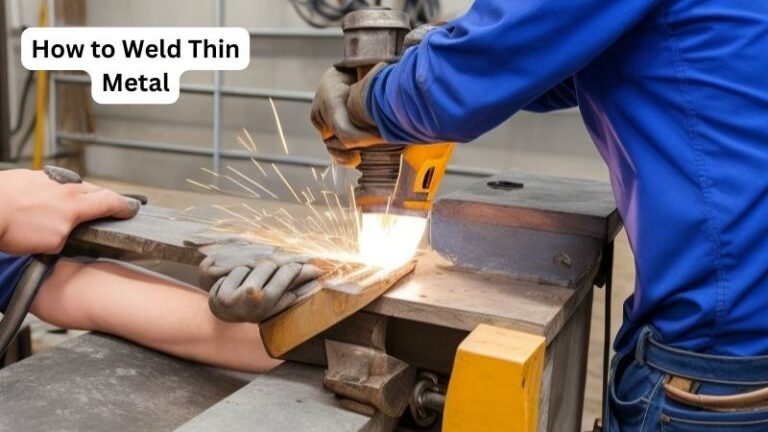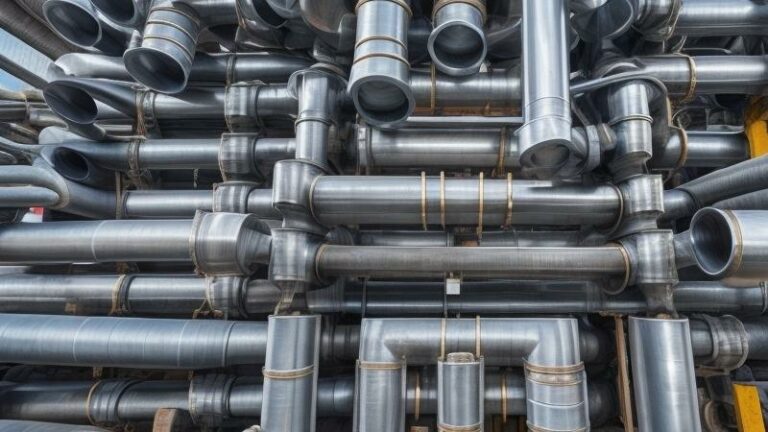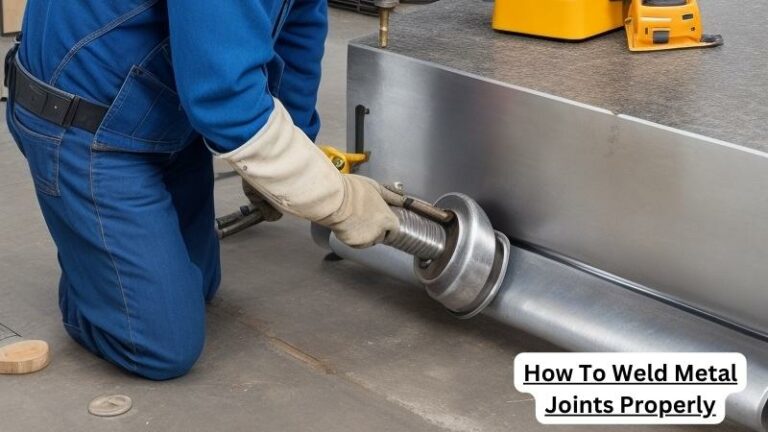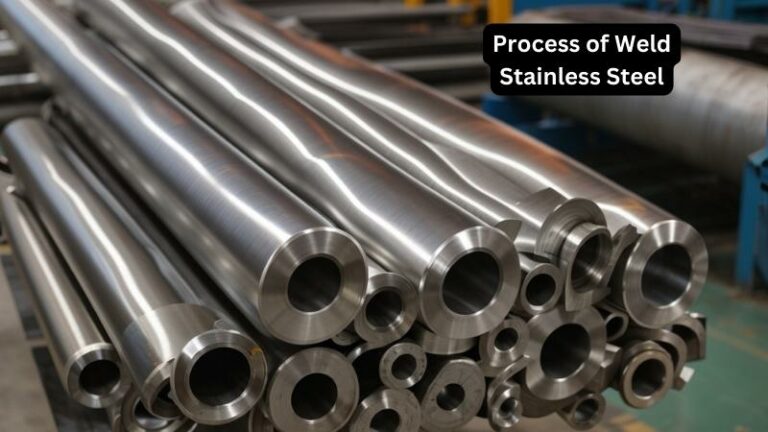How To Weld Different Metals Together
Today we discuss How To Weld Different Metals Together. In the realm of fabrication and construction, the art of welding holds an indispensable role. Whether you’re a seasoned professional or an enthusiastic DIYer, understanding the intricacies of welding different metals together is a skill that can elevate your projects to new heights.
From joining steel beams in skyscrapers to creating intricate sculptures, the ability to fuse metals with precision and strength opens up a world of possibilities. In this guide, we will delve into the fundamentals of welding, exploring various techniques and considerations when working with different types of metals. So, grab your welding mask, ignite your torch, and let’s embark on a journey to master the art of welding diverse metals together.
No two metals are created equal, and this axiom holds true when it comes to welding. Each metal possesses unique properties, melting points, and behaviors under heat. As a welder, it is crucial to understand these distinctions and adapt your techniques accordingly.
Whether you’re working with steel, aluminum, copper, or even exotic alloys, each metal requires a tailored approach to ensure a successful weld. Throughout this guide, we will not only explore the specific methods for welding different metals, but we will also unravel the secrets behind selecting the right filler materials, managing heat input, and mitigating common challenges encountered during the welding process.
To weld different metals together, follow these steps:
- Prepare the metals by cleaning them thoroughly.
- Adjust your welding machine settings based on the metals you are welding.
- Secure the metals in the correct position using clamps or fixtures.
- Apply the appropriate welding technique for the metals being joined.
- Allow the weld to cool down gradually to prevent cracking or distortion.
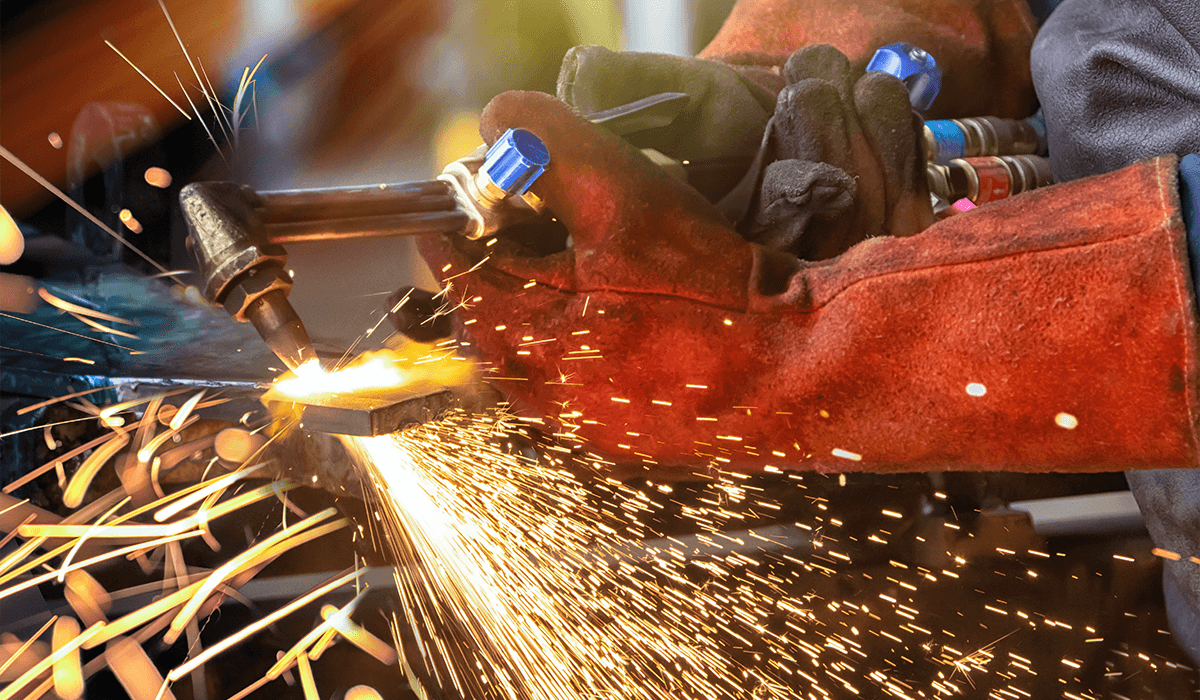
How to Weld Different Metals Together:
Step 1: Prepare the Metals
Before starting the welding process, it is crucial to prepare the metals properly. Begin by cleaning the surfaces to be welded using a wire brush or a grinder. This removes any dirt, rust, or paint that could interfere with the welding process. Additionally, ensure that the metals are properly aligned and securely clamped to prevent movement during welding.
For certain metals, such as aluminum, it may be necessary to apply a suitable cleaning agent or solvent to remove any oxidation. This ensures a clean surface for successful welding. Remember to follow the manufacturer’s instructions and take necessary safety precautions when handling cleaning agents.
Step 2: Choose the Correct Welding Technique
Each metal has its own unique properties and characteristics, requiring specific welding techniques for optimal results. For example, when welding steel, commonly used techniques include shielded metal arc welding (SMAW) or gas metal arc welding (GMAW). On the other hand, welding aluminum often requires the use of tungsten inert gas (TIG) welding or metal inert gas (MIG) welding.
It is essential to research and understand the appropriate welding technique for the specific metals you are working with. This ensures that the welding process is compatible with the metals’ properties and prevents any potential issues such as brittleness or weak joints.
Step 3: Set Up the Welding Equipment
Once the metals are prepared and the welding technique is determined, it is time to set up the welding equipment. This includes selecting the appropriate welding machine, electrodes, filler materials, and protective gear.
The welding machine should be set to the recommended settings for the specific metals and welding technique. Ensure that the electrodes and filler materials are compatible with the metals being welded. Additionally, always wear appropriate protective gear, including welding helmets, gloves, and clothing, to safeguard yourself from potential hazards.
Step 4: Perform the Welding
With the preparation and setup complete, it is time to perform the actual welding. Follow the welding technique specific to the metals being joined, ensuring a steady hand and consistent movement.
Start by creating a tack weld to secure the metals together. This helps in maintaining alignment during the welding process. Then, gradually move along the joint, applying the welding technique in a controlled manner. Take breaks as needed to prevent overheating of the metals.
Step 5: Post-Welding Inspection
After completing the welding process, it is crucial to inspect the weld joint for quality and strength. Use visual inspection and non-destructive testing methods, such as ultrasonic testing or X-ray examination, to identify any defects or imperfections.
If any issues are found, it may be necessary to rework the weld or seek expert assistance. Always prioritize the quality and integrity of the weld joint to ensure the longevity and reliability of the welded structure.
Step 6: Post-Welding Treatment
Depending on the specific metals and application, post-welding treatment may be necessary to enhance the weld joint’s properties. This can include processes such as heat treatment, stress relieving, or surface finishing.
Research and follow the recommended post-welding treatment methods for the specific metals being welded. This ensures that the weld joint achieves the desired strength, durability, and aesthetic appearance.
Step 7: Regular Maintenance
Lastly, ensure regular maintenance of the welded structure to prolong its lifespan. This includes routine inspections, addressing any signs of deterioration or damage, and implementing appropriate repair measures when needed.
By following proper maintenance practices, you can ensure that the welded metals remain in optimal condition, maintaining their integrity and functionality over time.
Step 8: Consider Professional Assistance
While this guide provides a comprehensive overview of welding different metals together, it is important to acknowledge that welding can be a complex and specialized skill. If you are uncertain or lack experience in welding, it is highly recommended to seek professional assistance.
A certified welder or welding service provider can offer expertise and ensure the best practices are followed, resulting in high-quality welds and safe outcomes.
Step 9: Continuing Education
To further enhance your welding skills and knowledge, consider participating in welding courses or workshops. Continuous learning and staying updated with the latest welding techniques and advancements will help you become a proficient welder.
There are various training programs and certifications available that can provide valuable insights and hands-on experience to strengthen your welding capabilities.
Step 10: Safety First
Welding involves inherent risks, such as exposure to intense heat, harmful fumes, and potential electrical hazards. Always prioritize safety by wearing appropriate personal protective equipment, ensuring proper ventilation in the workspace, and following safety guidelines and regulations.
Regularly inspect your welding equipment for any defects or malfunctions and maintain a clean and organized workspace to minimize potential accidents or injuries.
Faqs for How To Weld Different Metals Together:
There are several methods that can be used to weld different metals together. Some common methods include:
– Gas metal arc welding (GMAW): This method uses a wire electrode and a shielding gas to create the weld.
– Tungsten inert gas welding (TIG): This method uses a tungsten electrode and a shielding gas to create the weld.
– Spot welding: This method is commonly used for joining thin sheets of metal together.
– Laser welding: This method uses a high-powered laser beam to create the weld.
When welding different metals together, there are several factors that should be considered:
– Melting points: Different metals have different melting points, so it is important to choose a welding method that is suitable for the metals being joined.
– Compatibility: Some metals are more compatible with each other than others, so it is important to consider the compatibility of the metals when choosing a welding method.
– Joint design: The design of the joint can also affect the strength and durability of the weld, so it is important to choose a joint design that is appropriate for the metals being joined.
– Welding technique: Different metals may require different welding techniques, so it is important to choose a welding technique that is suitable for the metals being joined.
When welding different metals together, it is important to take certain precautions to ensure a successful weld:
– Clean the metals: Before welding, it is important to clean the metals to remove any dirt, rust, or contaminants that could affect the quality of the weld.
– Use the correct filler material: Using the correct filler material is crucial for achieving a strong and durable weld. The filler material should be compatible with the metals being joined.
– Control the heat: Different metals have different heat conductivity, so it is important to control the heat to prevent distortion or damage to the metals.
– Use proper ventilation: Welding can produce fumes and gases that can be harmful, so it is important to work in a well-ventilated area or use proper ventilation equipment.
While many metals can be welded together, not all metals are easily weldable. Some metals, such as aluminum and stainless steel, require specific welding techniques and equipment. Additionally, some metals may not be compatible with each other, which can affect the quality and strength of the weld. It is important to consult welding experts or reference materials to determine the best welding methods for specific metal combinations.
Welding different metals together can present some challenges, such as:
– Different melting points: Metals have different melting points, so it can be challenging to find a welding method that can accommodate the melting points of both metals being joined.
– Different thermal expansion rates: Metals can expand and contract at different rates when exposed to heat, which can lead to distortion or cracks in the weld.
– Compatibility issues: Some metals may not be compatible with each other, which can result in weak or brittle welds.
– Joint design: The design of the joint can also pose challenges, as certain joint designs may be more difficult to weld or may require specialized welding techniques.

Source: ytimg.com
conclusion:
mastering the art of welding different metals together requires a combination of knowledge, skill, and practice. By understanding the unique properties of each metal and selecting the appropriate welding techniques, one can achieve strong and durable welds. Whether it is joining steel and aluminum for a structural project or fusing copper and stainless steel for plumbing applications, the key lies in careful preparation, precise execution, and continuous improvement.
As technology advances, the demand for skilled welders continues to grow. With the right training and experience, one can unlock a world of opportunities in various industries such as construction, manufacturing, and automotive.
So, if you are fascinated by the idea of transforming separate pieces of metal into a unified whole, don’t hesitate to delve into the world of welding. Embrace the challenge, embrace the sparks, and let your creativity and craftsmanship shine through the art of welding different metals together.
